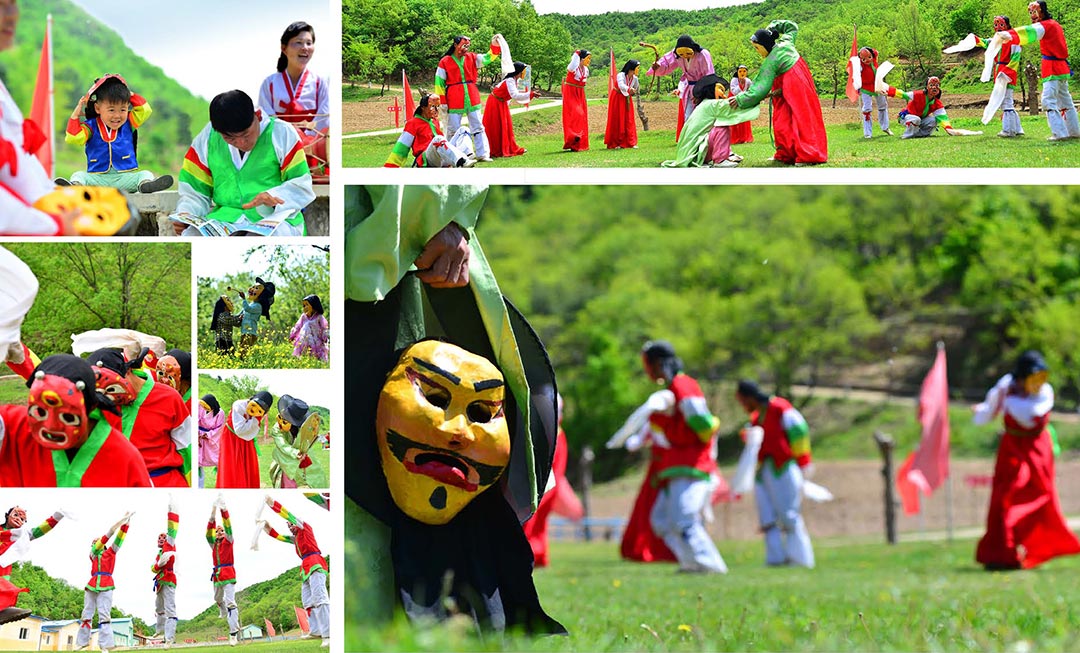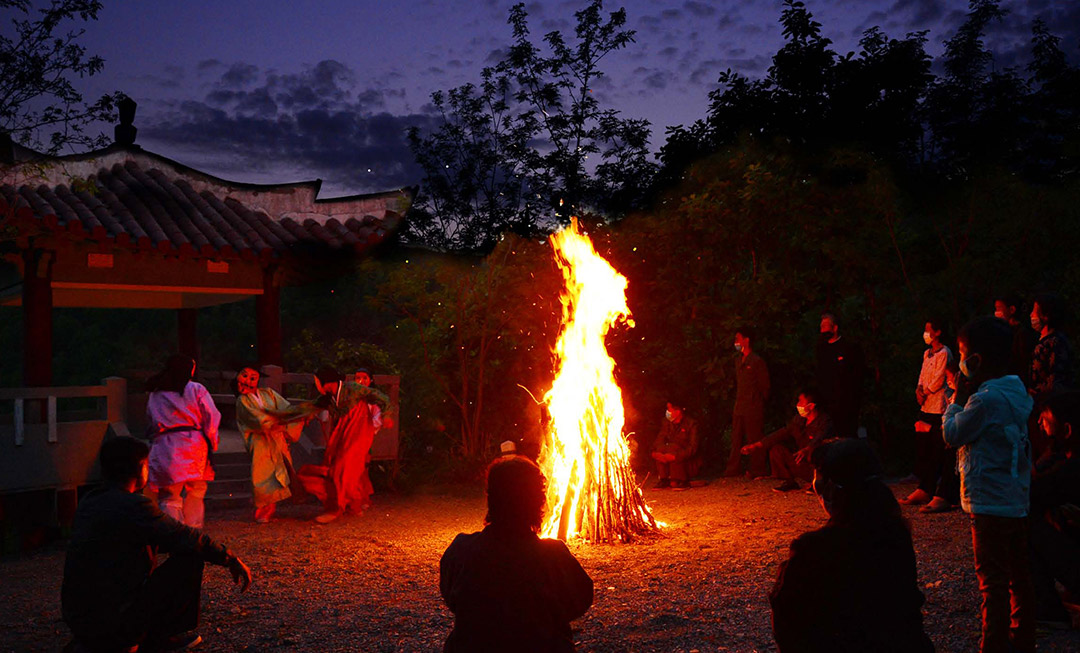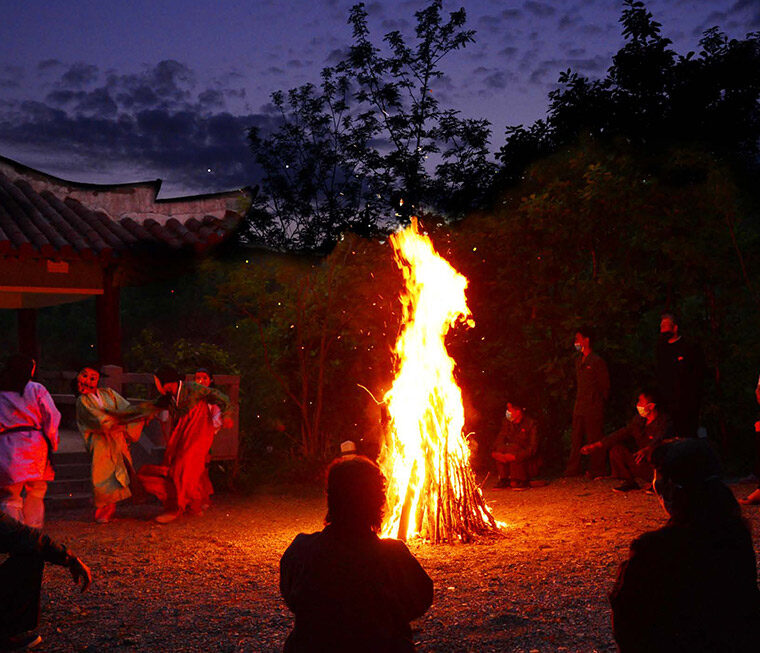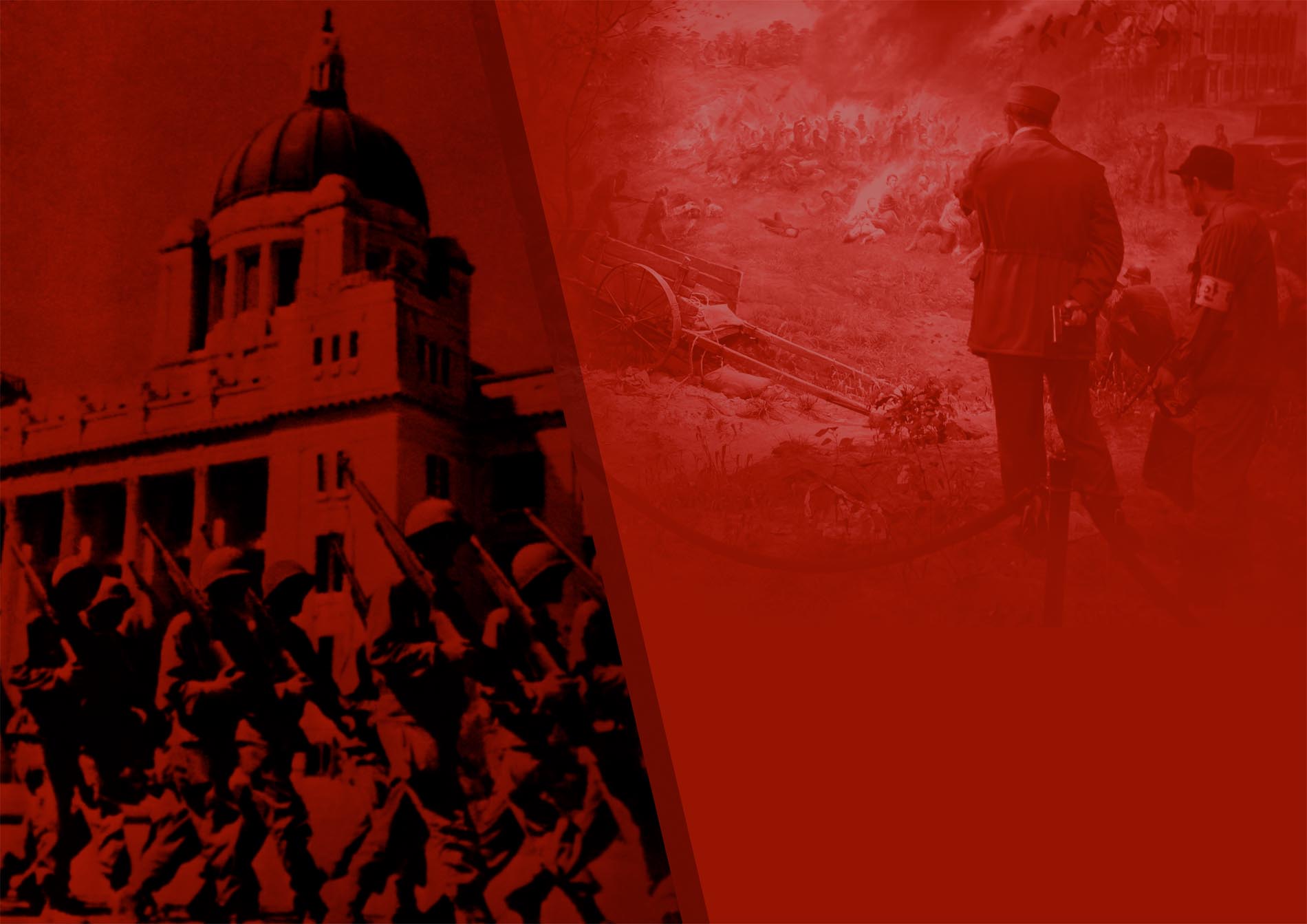

Pongsan County of North Hwanghae Province is widely known across the country for the mask dance as well as its local specialties, such as jujube and chestnut.
Pongsan mask dance which is said to date back to the closing years of Koryo (918-1392) represented the satire and derision on corrupt and incompetent feudal bureaucrats, the spirit of resistance of the people to free themselves from misery and pains and their optimistic sentiments.
The mask dance was performed to various national rhythmic patterns, adding zest to the excitement of the spectators, and its name became linked with that of the place. Hence the Pongsan mask dance.
Today the Pongsan mask dance is performed in almost all villages in the county on holidays and red-letter days, and dancers from Unjong-ri excel not only the locals but also those from other counties and provinces.
The ri’s mask dance team was organized 18 years ago, and at present it is headed by Mun Kum Ok, 43, who was a member of the first team.
As the eldest of the team and a protean dancer, Mun has been playing jing and kkwaenggwari, national musical instruments resembling gongs, since five years ago.
She pays close attention, as her seniors did, to training reserve dancers so as to carry forward the tradition of the mask dance. She has so far produced nearly 60 dancers.
According to her, the Pongsan mask dance comprises about 40 movements, including the flourishing of hansam, a kind of extension of the sleeves that cover up hands, swinging of the arms and jumping.
The team’s dancers, who have seen the mask dance since their childhood, are unanimous that their careless attempts to play the dance were apt to meet with failure, adding that there goes a saying, “Seeing is one thing and doing another.”
They also say that they could get the fundamentals of the dance after three months’ labourious practice.
The mask dance is played by 19 members, male and female dancers being eight respectively.
The most spectacular scene in the dance is when the feudal officials appear.
In particular, the representation of a nobleman and his wife is an important factor in sustaining the characteristics of the Pongsan mask dance.
Kim Ok Gum (female) has been playing the nobleman since her admission to the team in 2013. And Pak Kum Ryong (male) who plays the nobleman’s wife began his performance in the team three years ago by beating the jing in the dance.
The masks worn by the dancers are made in a traditional way, by pasting several layers of paper over clay models and painting with colours.
Dancers of Unjong-ri are making steady efforts to preserve and carry forward the tradition of the Pongsan mask dance.
Photo: Hwang Jong Hyok Text: Kim Son Gyong



